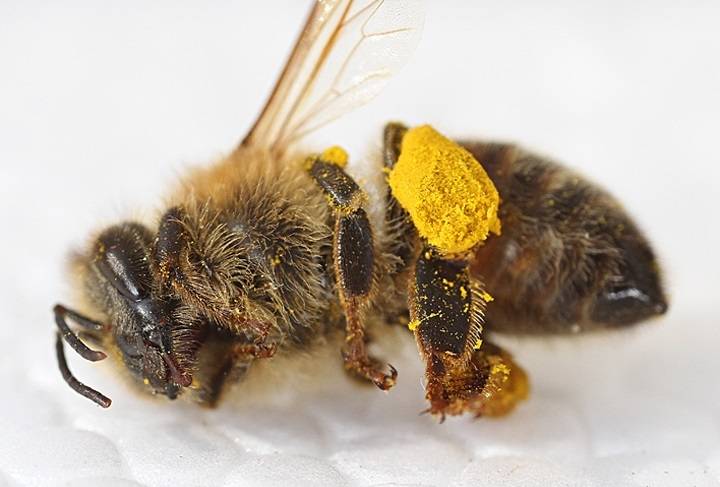Bee populations have been under threat in recent years. With that in mind, it’s no surprise that finding dead bees covered in pollen sets off alarm bells.
This happens for a variety of reasons, and knowing what it means can determine whether it’s worth paying attention to.
Lifespan of bees
The hive grows year-round, with an average of 50,000 workers collecting pollen. These are the bees you are most likely to find in your home garden or woods.

There are about 20,000 different species of bees. The most famous is the honey bee, which has a lifespan ranging from 28 to 56 days during the warmer months.
Why do I find dead bees?
One of the main reasons is that they live near you. Your hives are probably close to your home or work, which is why you see them so often.
When they become lethargic, they like to be in one place – not far from their food source. So you can find them near plants or even pots.
Another reason is the time of year. Pesticides are usually used on crops during the growing season – bees often die as they forage on farmland. They also work harder during the warmer months – they are considered short-lived summer bees.
Biggest threat to bees
- Insecticide
- Transgenic Plants (GMOs)
- Climate change
- Loss of habitat
- Bees forced into service; monoculture
- Pests, Diseases, Viruses and Molds
How can we help them? What does this have to do with pollen?
Pollen
Pollination occurs when bees fertilize flowers. Not only does this help the flowers reproduce, but it also gives bees more flowers to collect nectar. This symbiotic relationship keeps both species alive, and if one species perishes, the other soon perishes.
Most of the time, whether they’re alive or dead, you’ll see bees carrying pollen — because they’re looking for nectar and picking it up in the process.
Colony Collapse Disorder (CCD)
This phenomenon occurs when most worker bees leave the hive, leaving some bees to provide the queen with plenty of food. It used to pose a threat to bee colonization, but this “state of emergency” has since been downgraded.
According to the U.S. Environmental Protection Agency (EPA), the number of damages caused by CCDs has decreased in recent years. Therefore, colony collapse disorder may not be the main reason why pollen covers dead bees.
Old bees
The main reason you find a dead bee covered in pollen is that it dies of old age.
The reason they may have perished
- Cold weather
- Foraging too far from home
- Exhaustion
Most of the time, cooler temperatures and extreme weather conditions are too much for older bees to fly back to the hive. As a result, they gave up and sacrificed their lives for their queen so that she and the young bees could move on.
The last task a worker bee performs in its life cycle is foraging. It’s very tiring for them, so to speak, and the bees burrow into the ground. They were unable to return due to exhaustion.
If you spot a bee on the ground, don’t assume it is dead and move on. This may be a case of fatigue. Mix some sugar water (30/70% sugar/water) and set aside. Monitor the bee to make sure it is stable enough to venture back into the hive.
If they are just resting, they will fly back to their colony when they are warm.
Why are they covered in pollen?
We’ve seen worker bees live only up to eight weeks. In the final stages of their lives, they are sent to find food, including pollen. Of course, if they had been busy at work when they died, the bees would be littered with flower shards.
This coverage depends on the season and the vegetation around the hive.
Large number of dead bees
If at any time you see a large number of dead bees in an area, be sure to tell someone. They may die from natural causes or be poisoned by pesticides.
If you are concerned about bee mortality, please contact the U.S. Environmental Protection Agency (EPA) with details:
Ecological Pesticide Incident Reporting Portal
What does this mean?
If you find dead bees covered with pollen, it’s usually nothing to worry about. Nature is on the right track – it’s time for bees to leave the earth while gathering food.
Remember, if you notice a pollen-covered bee looking lifeless, check to make sure it’s not exhausted. Taking two minutes out of the day can save the life of a weary bee.

